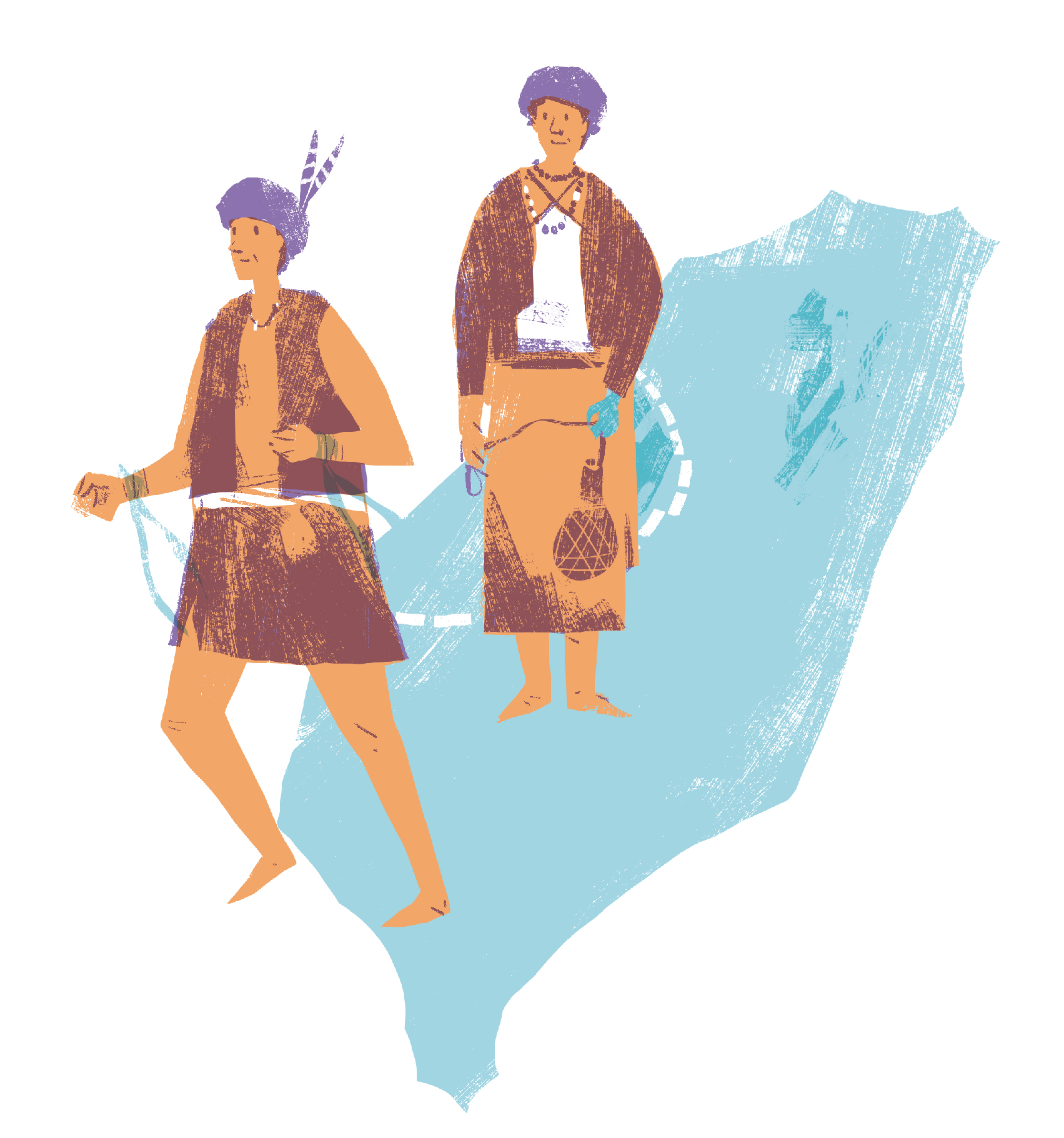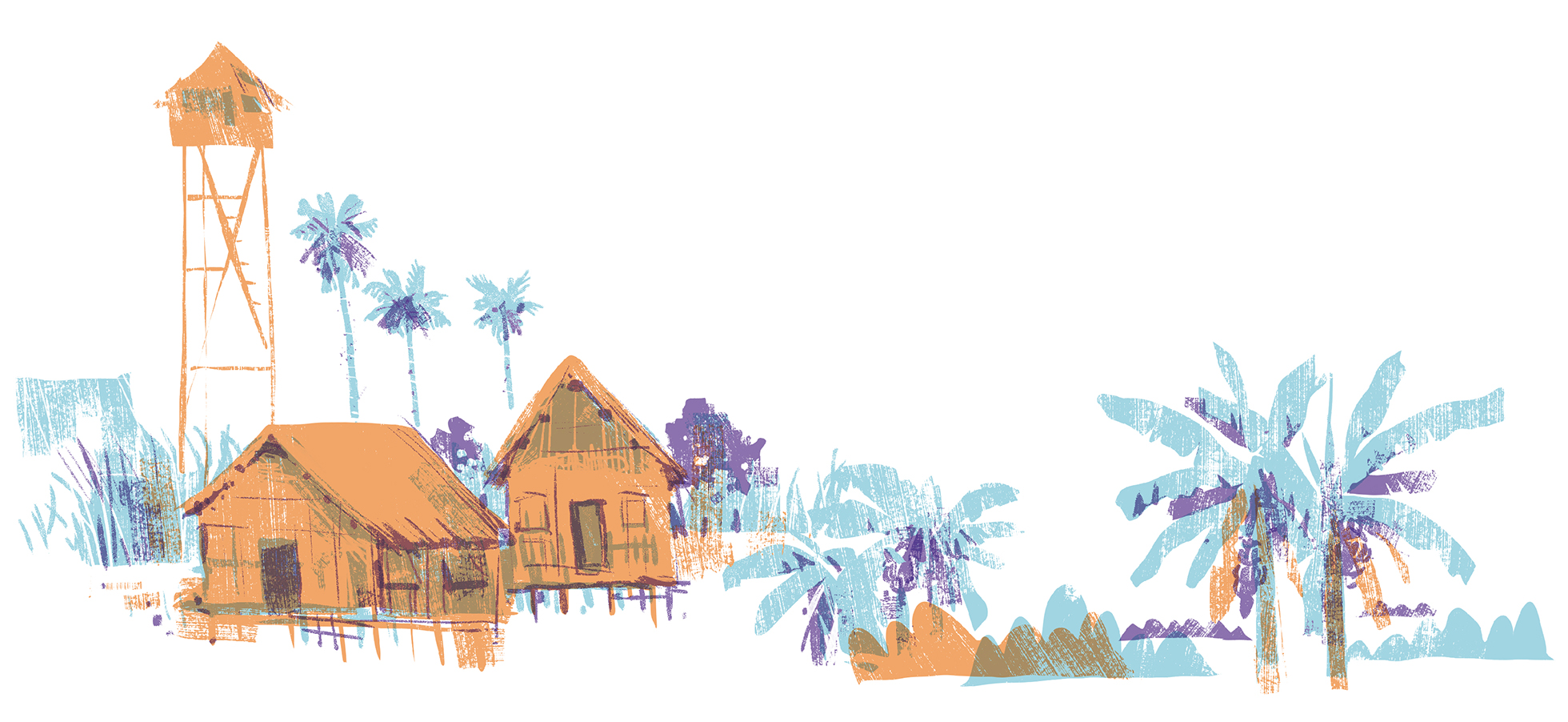 In the past, the numerous Taiwanese Plains Indigenous Peoples’ communities spread out in Yunlin, Chiayi, Tainan, Taichung, Changhua, and Nantou were referred to as the Honya or Hoanya. But this name recorded by Inō Kanori (and had been used for so long) very likely had originated from the Taiwanese dialect word “Hoan-á” (“savage”) and does not actually refer to any particular ethnic group at all. The Lloa and Arikun peoples, who are considered branches of the Hoanya, are probably more accurate names for the indigenous peoples who have lived on this land for decades. Historically speaking, the Lloa lived in Yunlin, Chiayi, and the northern parts of Tainan; and the Arikun spread along Taichung, Changhua, and the west side of Nantou.
In the past, the numerous Taiwanese Plains Indigenous Peoples’ communities spread out in Yunlin, Chiayi, Tainan, Taichung, Changhua, and Nantou were referred to as the Honya or Hoanya. But this name recorded by Inō Kanori (and had been used for so long) very likely had originated from the Taiwanese dialect word “Hoan-á” (“savage”) and does not actually refer to any particular ethnic group at all. The Lloa and Arikun peoples, who are considered branches of the Hoanya, are probably more accurate names for the indigenous peoples who have lived on this land for decades. Historically speaking, the Lloa lived in Yunlin, Chiayi, and the northern parts of Tainan; and the Arikun spread along Taichung, Changhua, and the west side of Nantou.
Currently we do not know much about the history of the Lloa and the Arikun. What we do know is that before the 19th century, some Lloa and Arikun peoples accepted the invitation of the Pu Village people originally living in Puli and resettled in Puli with other central Taiwanese Plains Indigenous Peoples. The population in present Pipa and Pacheng Village in Puli - basically the entire eastern and southeastern area of Puli Township - are all descendants of the Lloa and Arikun peoples.
Missing History Challenges
the Path to Traditional Culture Revival
Inō Kanori’s documents recorded a grand annual ritual that lasted for four consecutive days. The ceremony included rites such as Zou-biao, Tei-vakkai, Murao, and Manitan, and was led by young maidens near marriageable age dressed in ceremonial garments. After the 1999 Jiji earthquake, Pipa Village used Inō Kanori's records as reference and organized the Honya People Cultural Ritual event in attempt to revive the ceremony. Although the social and cultural environments of the Lloa and Arikun have been drastically altered, but the Honya People Cultural Ritual spurred on disaster recovery and community building projects after the 1999 Jiji earthquake, reviving communal memories and pulled community members in the southeastern area of Puli Township closer.

Arikun artifacts in museums present the existence of the peoples and their sufficient lifestyles. The Honya (according to museum categorization) garments and accessories displayed in the NTU Museum of Anthropology share similar silhouettes with those of other plains indigenous peoples in central Taiwan, such as the Kaxabu and Pazeh peoples; however, the weaving patterns show a unique style: rich red and blue threads form complex and 3-dimensional diamond and humanoid patterns on white hemp cloth.
It is challenging for the Lloa and Arikun to revive their traditional cultures at the moment. But like other indigenous peoples, these two groups are still dedicated to reviving their culture and have never forgotten the painful experiences in their history. Whether forced to migrate, oppressed, forgotten, or lost, history and fate handed out different opportunities and challenges to each group of people. It would be foolish to be arrogant when interpreting history, especially when we have so limited documentation as reference, for the fate and fortune of every ethnic group are only temporary in different points in time. The Lloa and Arikun should not forget the grace and pride of their ancestors as they wove and wore the grand and delicate ceremonial garments.





